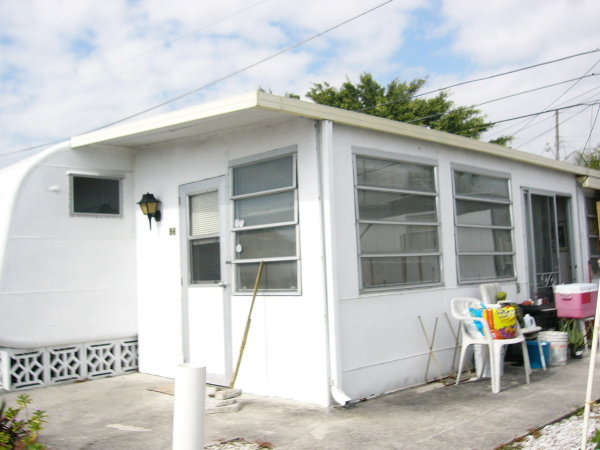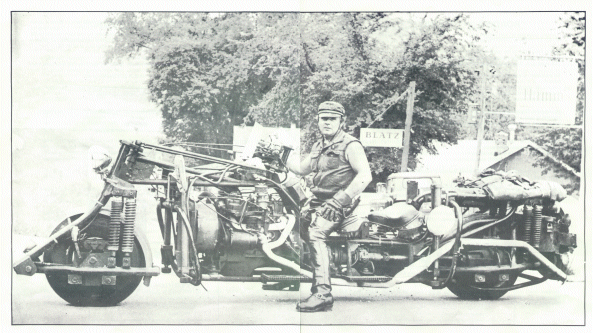Schwarz
View current page
...more recent posts
Bisazza was established and maintains its headquarters in the northern Italian city of Vicenza, which Palladio also called home. Founded by Piero's father, Renato Bisazza, in 1956—a time when the fortuitous combination of craft tradition with postwar industrialization put Italy at the vanguard of contemporary design—the company developed mass-production processes that moved ancient Venetian glassmaking in the direction of a modern mosaic industry. In addition to classic glass mosaic mounted tesserae-style on paper or mesh, Bisazza produces specialty tiles like Oro, featuring 24-karat gold leaf sandwiched between vitreous layers, and Gemme, which incorporates avventurina, a synthetic stone developed in 17th-century Venice that creates a glittering, jewellike effect.

so-fla vernacular: trailer home w/ "florida room" addition
autopen
Dear a-matter reader: After exactly five years, a-matter is coming to an end as a successful project of Sedus Stoll AG. In concrete terms, this means that no new information will be published on this platform and that editorial work has stopped. a-matter, however, will continue to be available as a library. You will continue to be informed of architectural matters and projects concerning Sedus Stoll AG. The last update is given below.
"If you look back to the founding document of the 60's left, which was the Port Huron statement (also promulgated in Michigan), you will easily see that it was in essence a conservative manifesto. It spoke in vaguely Marxist terms of alienation, true, but it was reacting to bigness and anonymity and urbanization, and it betrayed a yearning for a lost agrarian simplicity. It forgot what Marx had said, about the dynamism of capitalism and ''the idiocy of rural life.'' Earlier 18th- and 19th-century American communards had often been fleeing or preparing for a coming Apocalypse, and their emulators in the 1960's and 1970's followed this trope as well, believing everything they read about the impending crash, or the exhaustion of the world's resources. The crazy lean-to of the Unabomber began to take dim shape at that period, even if many of the new pioneers were more affected by the work of the pacific Tolstoy or of C. Wright Mills (who used to recommend, if memory serves, that people should build their own cars as well as their own houses)."
im getting everybody free mp3s for christmas this year. so here, merry christmas. maybe start with ODB sussudio and come back to the rest for desert.
the six words dj tony coulter uses to describe the music he plays are : psychedelic, progressive, experimental, folk, sound collage. i could shorten that even further to : world-psyche. his is the type of musical sensibility that dug up "os mutantes" from brasilian obscurity a few years back. but thats just a starting place. he mines even rarer psych music from all over the world. check his playlists and listen to the archives.
"A theory that the ancient Mayans built their pyramids to act as giant resonators to produce strange and evocative echoes has been supported by a team of Belgian scientists"

Agnes Martin, White Flower, 1960. Oil on canvas, 71 7/8 x 72 inches. RIP 12.16.2004
Refrigerator Heaven
"The velvety surface of the in-situ black concrete skin was glowing in the light rain at the Topping Out ceremony on December 8th. Ordrupgaard Director Anne-Birgitte Fonsmark thanked the construction crew for their teamwork and superb workmanship in the realization of Zaha Hadid’s visionary design. Minister of Culture Brian Mikkelsen led the list of speakers.
The topping out, an important tradition in construction projects, is when the uppermost steel beam is put into place, which means that the structure under construction has reached its highest point. A flag and evergreens are placed on top of the structure marking the final stretch in the building’s progress."
Freedom Tower Site Poised for a Game of Inches
"Yet the waves have to be 20 feet or higher for the contest to occur, and the competition has been held in only six of the past 16 seasons. With waves of about 30 feet breaking at Waimea this morning, the surf was high enough for the contest to start at about 8:30 a.m. local time, media director Jodi Young said by telephone on what she called ``an absolutely perfect day.''
``It's amazing,'' Young said. ``There's probably about 10,000 people here. It's definitely the most people this beach has ever seen. Really it's just an absolute spectacle. The waves that are coming through are just dwarfing the houses.''
Mayor Michael Bloomberg's administration has launched development strategies in over 20 New York City neighborhoods to create new offices and new housing.
Brookings
Toward a New Metropolis: The Opportunity To Rebuild America
In short, this paper finds that:
In 2030, about half of the buildings in which Americans live, work, and shop will have been built after 2000. The nation had about 300 billion square feet of built space in 2000. By 2030, the nation will need about 427 billion square feet of built space to accommodate growth projections. About 82 billion of that will be from replacement of existing space and 131 will be new space. Thus, 50 percent of that 427 billion will have to be constructed between now and then.
Most of the space built between 2000 and 2030 will be residential space. The largest component of this space will be homes. Over 100 billion square feet of new residential space will be needed by 2030. However, percentage-wise, the commercial and industrial sectors will have the most new space with over 60 percent of the space in 2030 less than 30 years old.
Overall, most new growth will occur in the South and the West. There is tremendous variation in the total amount of buildings to be built between regions. In the Northeast, for example, less than 50 percent of the space in 2030 will have been built since 2000, while in the West that figure is about 87 percent, a near doubling of built space. Fast growing southern and western places—states like Nevada and Florida and metropolitan areas like Austin and Raleigh—will see the most dramatic growth.
Though a small component of overall growth, the projected demand for industrial space in the Midwest outpaces that of the other regions, unlike the other major land uses. States with a strong industrial presence will see the largest amount of growth in industrial space even though other areas may witness faster growth. After California, which far outpaces the nation in terms of absolute square feet of new industrial construction, the next four largest producers of industrial space are all Rust Belt states in the Midwest: Ohio, Michigan, Illinois, and Indiana. By 2030, 70 percent of the Midwest's industrial space will be less than 30 years old.
While these projections may seem overwhelming, they also demonstrate that nearly half of what will be the built environment in 2030 doesn't even exist yet, giving the current generation a vital opportunity to reshape future development. Recent trends indicate that demand is increasing for more compact, walkable, and high quality living, entertainment, and work environments. The challenge for leaders is to create the right market, land use, and other regulatory climates to accommodate new growth in more sustainable ways.
"Two employees of the owner of 111 First St. in Jersey City were arrested by the Fire Department Arson Unit Friday, but investigators are releasing no information about their arrests or the charges they face, officials said."
"The 111 First Street Arts Center is located near the waterfront in Jersey City, just across the Hudson River from the World Trade Center site. Built
in 1860?s, the famous P. Lorillard Tobacco Company, once one of the largest of our nation's tobacco manufacturers, is now the 111 Building, a unique brick architectural treasure.
The 111 First Street Building is owned by NY/NJ property owner Lloyd Goldman. For your information, investors Lloyd Goldman and Joseph Cayre joined with developer Larry Silverstein in buying the World Trade Center 99-year lease for $3.2 billion. "
111 link

Crate desk
designer:
Gerrit Thomas Rietveld
year: c.1934
manufacturer:
Metz & Co.
Painted pine
39.5"w x 23.5"d x 28"h
". . .a piece of furniture of fine wood, made wholly according to traditional methods, is shipped in a crate to prevent damage and breakage. Someone receiving such a crate at home says, at most: well packed. But it has never been established that such a crate represents a freely rendered method of carpentry aimed straight at its goal. The plain materials of which it is composed make it stronger than its precious contents. . .Therefore, there must finally be someone who chooses the crate instead of the piece of furniture."
Literature:
Complete Reitveld Furniture, Voge, pg. 88-89 fig 136
estimated value: 7000-9000 US$
sale date: 12.07.2003
location: Chicago
lot number: 222
sales title: Modernist 20 Century
[from wright online auction catalog archive]
"There it stood, this immense, playfully improbable checkerboard box, sharply delineated against a gray winter sky, hovering on angled stilts above an otherwise nondescript city street. Way above it. The box is only 30 feet high, but there's a gap of maybe 50 feet between its underside and the roofs of the four-story buildings below."

